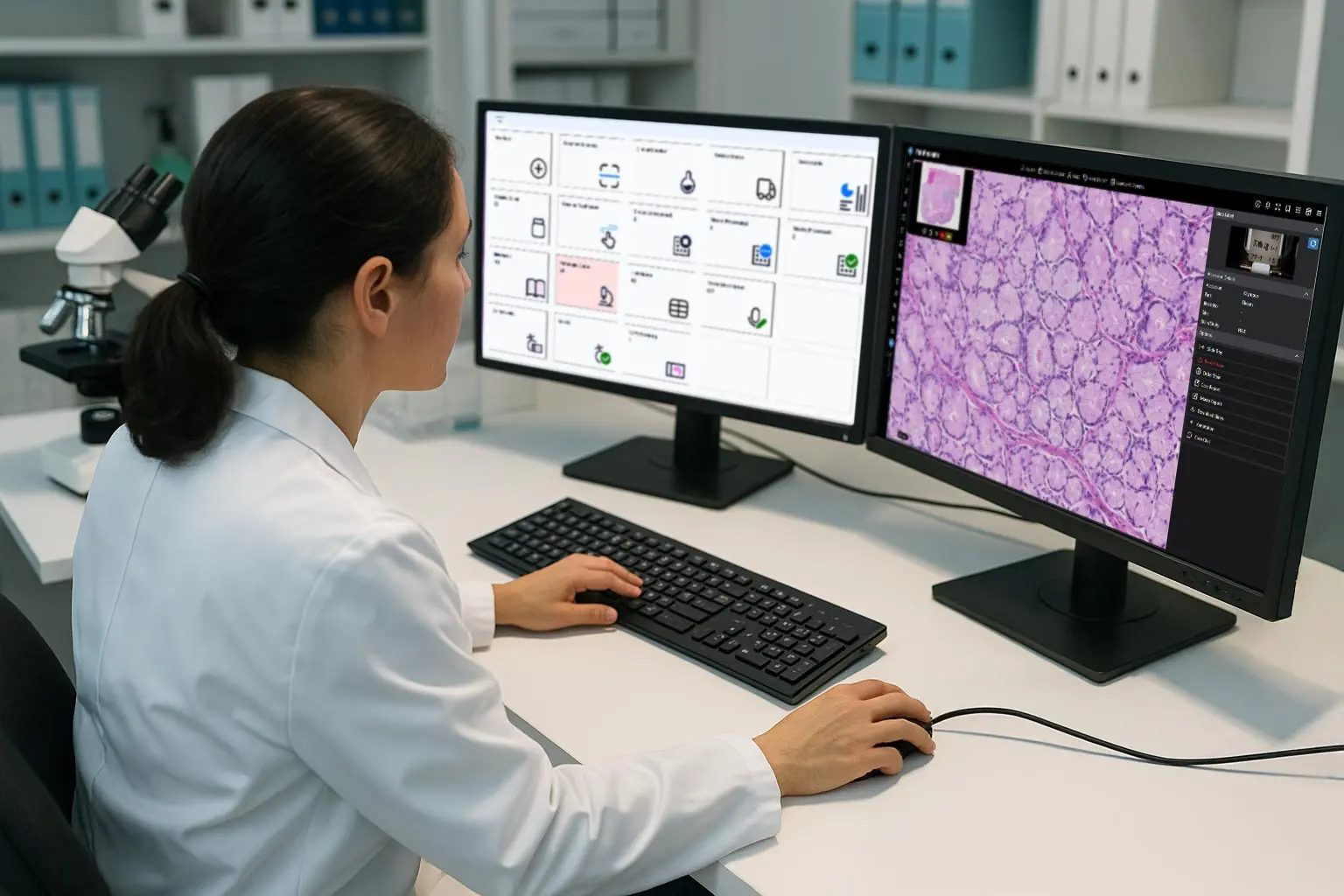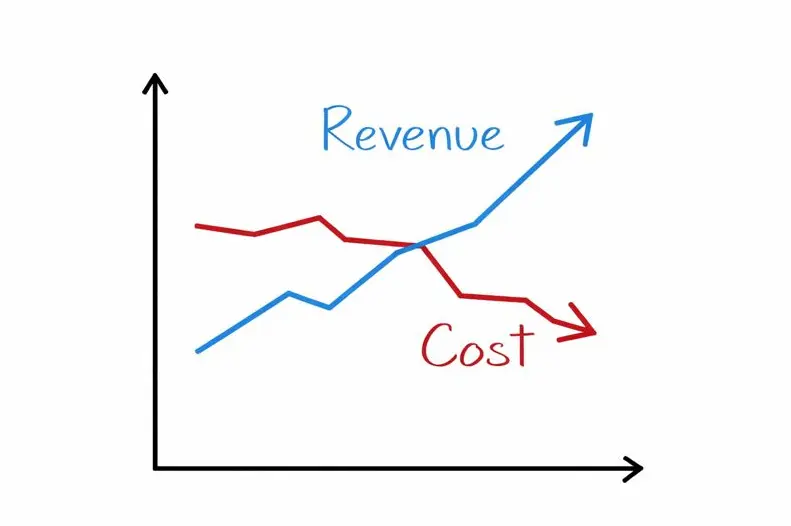Blog
Optimizing Lab Workflow
December 22, 2025
Working in a clinical laboratory or pathology practice, where accurate data capture and efficient laboratory workflow management are essential, can be complex, as multiple staff members often perform a wide range of daily processes. This complexity can be addressed by streamlining and integrating these activities into a cohesive daily workflow cycle as part of comprehensive pathology lab management.
What is Laboratory Workflow Management?
Laboratory workflow management is a structured framework, often visualized as a checklist or flowchart, that tracks every task as it moves through the laboratory and clearly defines each technician’s role, ensuring consistency, accountability, and operational control. In practice, effective lab workflow management is supported by a laboratory information system (LIS) that aligns with established standard operating procedures (SOPs) and drives greater efficiency across laboratory operations.
Discover More: Mastering Lab Operations - A Guide to Clinical Laboratory Management Solutions

The Best Laboratory Information System Software and Lab Workflow
Next, let’s examine the role of laboratory information systems and how the best LIS software supports modern lab workflow.
The best laboratory information system software can expertly manage all patient information, including personal data, lab test results, and other essential clinical examination data that need sorting and storing.
LIS software is a formal tool used to streamline this laboratory workflow management process, as it reduces unwanted errors resulting from the tedious manual recording/processing of patient and specimen data.
Laboratory information system software helps oversee clinical lab workflow by supporting sample tracking, laboratory testing workflow, workflow process improvement, and lab workflow optimization, among many other critical operational tasks.
Leveraging an efficient, all-in-one LIS system workflow platform tailored to the needs of the clinical laboratory enables automation of core processes while providing real-time visibility into specimens and test results. This empowers laboratory teams to deliver faster, more accurate clinical outcomes while strengthening patient safety.
Discover More: Best LIS Software - Maximize Growth With Cutting Edge Pathology Lab Management Software
Laboratory Workflow Management and the Digital Pathology Workflow
Effective laboratory workflow management also supports the adoption of virtual microscopy. Digital pathology solutions enable the acquisition, management, and interpretation of pathology data in a modern, nontraditional way, using digitized slides viewed on a monitor instead of glass slides examined under a microscope.
By streamlining digital pathology workflows, pathologists can more easily identify patterns, flag outliers, and collaborate across locations. Digitized images can be securely shared between clinical settings, improving laboratory efficiency and reducing diagnostic turnaround times.
Because the integrity of a clinical examination relies on consistency, repeatability, and thorough documentation, a well-designed laboratory workflow management system ensures that every team member clearly understands their responsibilities. This alignment enables laboratory staff to seamlessly work together to process specimens accurately and deliver reliable, timely results.
On-Demand Webinar: Utilizing Digital Pathology to Help Offset Today’s Laboratory Challenges

Laboratory Workflow Management and Laboratory Information System Companies
Laboratory workflow management is inherently complex, as organizations must strictly adhere to both established standard operating procedures and the requirements of the Health Insurance Portability and Accountability Act (HIPAA). These regulations safeguard patient information across three critical areas: technical security, administrative controls, and the physical protection of data.
Clinical healthcare organizations, including pathology laboratories, clinics, and hospital systems, are required to comply with all three. To do so effectively, they rely on a secure, searchable, and fully auditable laboratory information system, supported by an innovative LIS company committed to data protection and regulatory compliance.
Streamlining Laboratory Processes with the Right LIS System Partner
One of the most effective ways medical laboratories can streamline operations is by proactively planning solutions in partnership with their laboratory information system vendors. A well-designed LIS medical solution should include built-in troubleshooting guidance for common issues or abnormalities, enabling laboratory personnel immediate access to the information they need, without delays or risking specimen integrity.
The LIS system should also automatically document unexpected issues as they occur, creating a reliable audit trail that supports continuous process improvement and accountability. Ultimately, the selected LIS system should be a refined and dependable platform that enables pathologists and laboratory professionals to deliver accurate results quickly, strengthening patient care and operational confidence.
Discover More: The Best Laboratory Information System Companies and the Advantages They Offer to Their Laboratory Clients
How to Improve Laboratory Workflow Management
Here are some tips to help improve laboratory workflow management. Most of these would be more achievable with advanced LIS system solutions backed by the best LIS vendors.
They are as follows:
Helpful Tips
Identify Bottlenecks - Does a procedure repeatedly bottleneck at the same point? Is a recurring pattern noticeable but difficult to confirm due to a lack of documented data? Identifying where and why these issues occur enables laboratories to address root causes and eliminate inefficiencies.
Do Tasks Simultaneously - A clear example is the unprecedented speed at which a safe and effective COVID-19 vaccine was developed, made possible by executing processes in parallel rather than sequentially. Similarly, laboratories should identify tasks that can be performed independently or simultaneously with other clinical operations to reduce procedural time.
Develop a Continuous Flow Process - Instead of batching or waiting until a group of tests is ready to be handled, develop a continuous flow. This can help patients obtain answers faster and encourage employees to diversify their workday.
Industry Insights: Just-In-Time vs. Batch Processing in the Medical Lab - Examining the Pros and Cons
Why Use Laboratory Workflow Management Software?
Laboratory workflow management software, such as a laboratory information system, is a critical component of achieving optimal efficiency and productivity. Comprehensive pathology lab management extends beyond core workflows to include laboratory billing and lab revenue cycle management (lab RCM), digital pathology solutions, ongoing workflow evaluation and optimization, staff continuing education, and continuous compliance oversight.
Effective laboratory workflow management also encompasses inventory, scheduling, documentation, and real-time reporting on laboratory operations. Process control lies at the heart of clinical laboratory management, and this is where robust, well-designed workflow solutions play a vital role.
The Role of a Reliable LIS System in End-to-End Laboratory Workflow Management
A modern, reliable medical laboratory information system operating within a shared database ensures that every component of laboratory workflow management is monitored, coordinated, and functioning efficiently. Built-in automation and clearly defined, multi-department operational guidelines are essential for optimizing workflows, maintaining data integrity, and ensuring accurate specimen management.
When laboratories struggle with legacy or poorly designed medical LIS software, common issues often include limited technical support, incomplete functionality, inefficient user interfaces, inaccessible databases, and missing or untracked patient or specimen records. These shortcomings create operational friction and hinder productivity.
An agile, comprehensive, and future-ready LIS system platform addresses these challenges by eliminating workflow barriers, thereby improving visibility and control, and enabling laboratories to scale with confidence while strengthening overall business performance.
Discover More: How to Turn Your Mid-Sized Medical Laboratory into a Thriving Large-Scale Operation

The Final Word on Optimizing Laboratory Workflow Management
Improving efficiency and usability across laboratory workflows is essential to optimizing operations. Effective laboratory workflow management must align with established standard operating procedures (SOPs), existing practices, and rigorous quality control requirements.
Given the interconnected processes within a laboratory, implementing a robust workflow management framework, powered by a modern medical laboratory information system, can significantly increase operational speed, capacity, and consistency.
The best LIS software platforms streamline data capture, simplify access to historical records, and support ongoing research initiatives. More importantly, advanced LIS software drives higher productivity and enhances the overall quality of laboratory services. Whether expanding test menus or scaling testing volumes, a well-optimized, LIS-driven clinical lab workflow enables organizations to improve accuracy, grow efficiently, and adapt to the evolving demands of healthcare.
Discover More: Pathology Lab Software - Determining Which LIS System is the Best Fit for Your Laboratory
Transform Complexity into Clarity
See how a modern laboratory information system aligns workflows, improves consistency, and accelerates performance across your lab.







